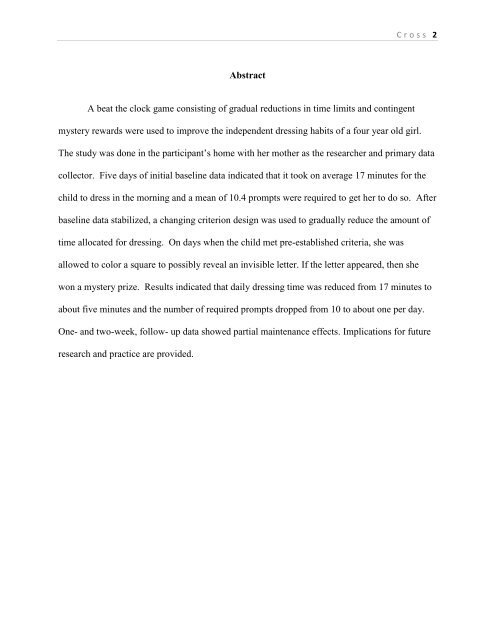THE EFFECTS OF A TIMER AND MYSTERY MOTIVATORS ON THE ...
THE EFFECTS OF A TIMER AND MYSTERY MOTIVATORS ON THE ...
THE EFFECTS OF A TIMER AND MYSTERY MOTIVATORS ON THE ...
You also want an ePaper? Increase the reach of your titles
YUMPU automatically turns print PDFs into web optimized ePapers that Google loves.
C r o s s 2<br />
Abstract<br />
A beat the clock game consisting of gradual reductions in time limits and contingent<br />
mystery rewards were used to improve the independent dressing habits of a four year old girl.<br />
The study was done in the participant’s home with her mother as the researcher and primary data<br />
collector. Five days of initial baseline data indicated that it took on average 17 minutes for the<br />
child to dress in the morning and a mean of 10.4 prompts were required to get her to do so. After<br />
baseline data stabilized, a changing criterion design was used to gradually reduce the amount of<br />
time allocated for dressing. On days when the child met pre-established criteria, she was<br />
allowed to color a square to possibly reveal an invisible letter. If the letter appeared, then she<br />
won a mystery prize. Results indicated that daily dressing time was reduced from 17 minutes to<br />
about five minutes and the number of required prompts dropped from 10 to about one per day.<br />
One- and two-week, follow- up data showed partial maintenance effects. Implications for future<br />
research and practice are provided.
















